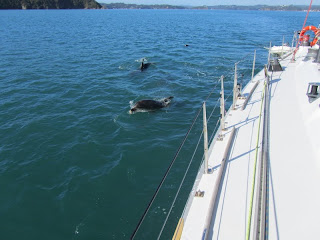When considering Australia in terms of its wildlife, iconic images consist of Kangaroos, Wallabies, Koala bears, Sharks and generally everything that can kill you in a second. Well, we were fortunate not to have any encounters with any lethal creatures during our first week in Australia, but we did visit Kangaroo Island, off Cape Jarvis, which is renowned for its abundance of wildlife including, yep, you’ve guessed it, Kangaroos. Of course, we were not guaranteed to see anything, such is the unpredictability of wildlife, but we were blessed. They must have known the Poms were coming. In fact, on our way to catch the ferry to the island, we spotted the silhouetted figures of a family of ‘roos on the peak of a hill whose sighting had us content enough that if we had glimpsed no more of the unconventional animals we would be satisfied. But the island lived up to its name by giving us a close-up experience with a wild one who seemed oblivious and unbothered by our presence. We could have almost shook his hand, or sparred with him, but instead we respected his personal space and made him the subject of many a photo. Odd as they are, their mannerisms are almost human, except for the fact that after he was done entertaining us he hopped away effortlessly. This was on a farm that had been planted with Tasmanian Blue Gum trees that soon attracted the attentions of many a wild Koala Bear. The farmer consequently opened an informal sanctuary for the admission price of two dollars for any visitors. Since they are nocturnal, like many other creatures in this part of the world, we didn’t hold out much hope of seeing them. However, since there are not many places for Koalas to hide in the sparse branches of the gumtree, it just meant that they would not be so active during the day. But a sleeping Koala bear is just about as cute as you can get, and they soon tested the capabilities of our zoom lens. Further down the road, we took the opportunity to ‘walk with Sealions’ on a beach inhabited by a huge colony of the mammals. For a creature that can be at sea for weeks on end, they need their rest and hundreds lazed around on the beach and in the sand dunes allowing us a prime view of their natural lifestyles. If Kelly Slater could catch his pick of a wave as effortlessly as they do, the annual world championships would be a cinch. Walking through the dunes also afforded us our only sighting of a live Wallaby as, unfortunately, too many can be viewed by the side of the road as roadkill. A quick-witted joke as we made our way around the island renamed those unfortunate ones Wallabeens. On our way back from the beach toward the ferry terminal to make our way back to the mainland we couldn’t believe our luck as hawk-eyed Helen spotted the Porcupine-like Echinda sniffing around in the dirt by a bush at the side of the road.
Once back on the mainland, we continued on our journey to Melbourne via the Great Ocean Road where we spotted the bulbously fore-headed Kookaburra, made famous by branded cricket bats of the same name (you’ll be pleased to know that no kookaburras are harmed during the making of their bats), sunning himself on a high-wire. Before we left for New Zealand in the following days, we had one more stop to make at Penguin Island in order to see the subjects of a BBC wildlife series narrated by Rolf Harris, Little Penguins (yes, that is actually their official name since they are the world’s smallest), who arrive every night on a specific beach in their droves. Hundreds arrive nightly after being at sea for as long as three months at a time to waddle up to their burrows in the dunes for some rest. Some can venture up to one and a half kilometres inland to find their burrows. They appear from the surf, shake from top to tail feather and wait for others to join them until they are a group of around a dozen for protection as they are very vulnerable to predators, before they make their way up the beach. Since it is hard work for the little creatures to traipse up such unforgiving terrain, they have to stop every thirty yards or so for a rest, which provides for great viewing. We were lucky to see 860 penguins the night we went. Sadly, but understandably, photography was prohibited.
As you can imagine, we hoped we would see the kinds of wildlife for which Australia is famed, but we did not imagine seeing and experiencing as much of it so soon after we arrived. Add to the list those animals we saw in New Zealand; the obligatory and fiercely nocturnal Kiwi (in a conservation centre so sadly there are no photos), eccentric Emus, several Dolphins that swam and played right by the bow of our sailing boat in the Bay of Islands, and some Yellow-Eyed Penguins that appeared from the surf on a beach in the south island, it was like we were on some kind of reserve. It was a gentle but stark reminder that there are other majestic beings with whom we share this planet and we consider ourselves privileged to have been given the opportunity to experience some of the more obscure ones.












No comments:
Post a Comment